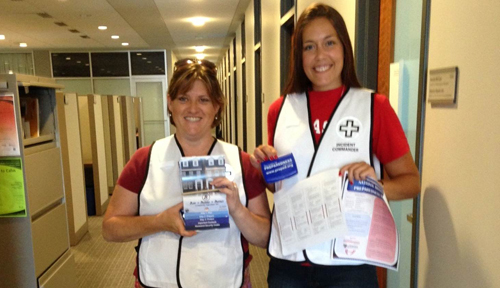September is National Preparedness Month — each week, the Center for Preparedness Education is highlighting a component of disaster readiness by providing helpful tips and resources. This week’s focus is on preparedness.
Scenario 1: It’s 2:30 in the morning and your phone rings. It’s a recorded call from the city indicating that your neighborhood is being evacuated due to a gas leak. Do you have a bag ready to grab, along with your family members (including your pets), that will allow you to leave your home quickly?
Scenario 2: Your community is hit by an ice storm, essentially shutting down your city. Power lines — encased with ice — are collapsing under pressure, resulting in a loss of power across a large portion of your region. Travel is impossible, and you are now home with your family and no power. It’s cold, dark, and boring. What is your plan?
We all know we are not immune to the possibility of something disrupting our sense of security, our livelihoods and the safety of our family. Research indicates that employees are less likely to report to work during an emergency if they are worried about their family’s level of preparedness or their safety at home.
Preparedness efforts on the home front help you and your family become resilient should the unforeseen happen. What have you done to prepare your household for a disaster? While we don’t advocate you going too extreme as a “Doomsday Prepper,” you do need to be ready to support your household for at least a three-day power outage or other type of disaster.
Things you can do to make sure you and your family are prepared:
- Sign up for campus or community alerts to your phone or email (i.e. UNMC Alerts, KETV Alerts, Weather Channel, or other local apps).
- Create a Preparedness Kit (click for supply list ideas from www.Ready.gov).
- Make a plan for your household (click for suggestions/resources from www.Ready.gov).
- Practice your family plan.
- Know how you will communicate with your family members — remember, backup methods may be necessary, and you should have important phone numbers memorized.

How do we find out what risks exist in our home neighborhood? For example, some staff may live close to industrial plants that have safety risks for leaks or explosions.